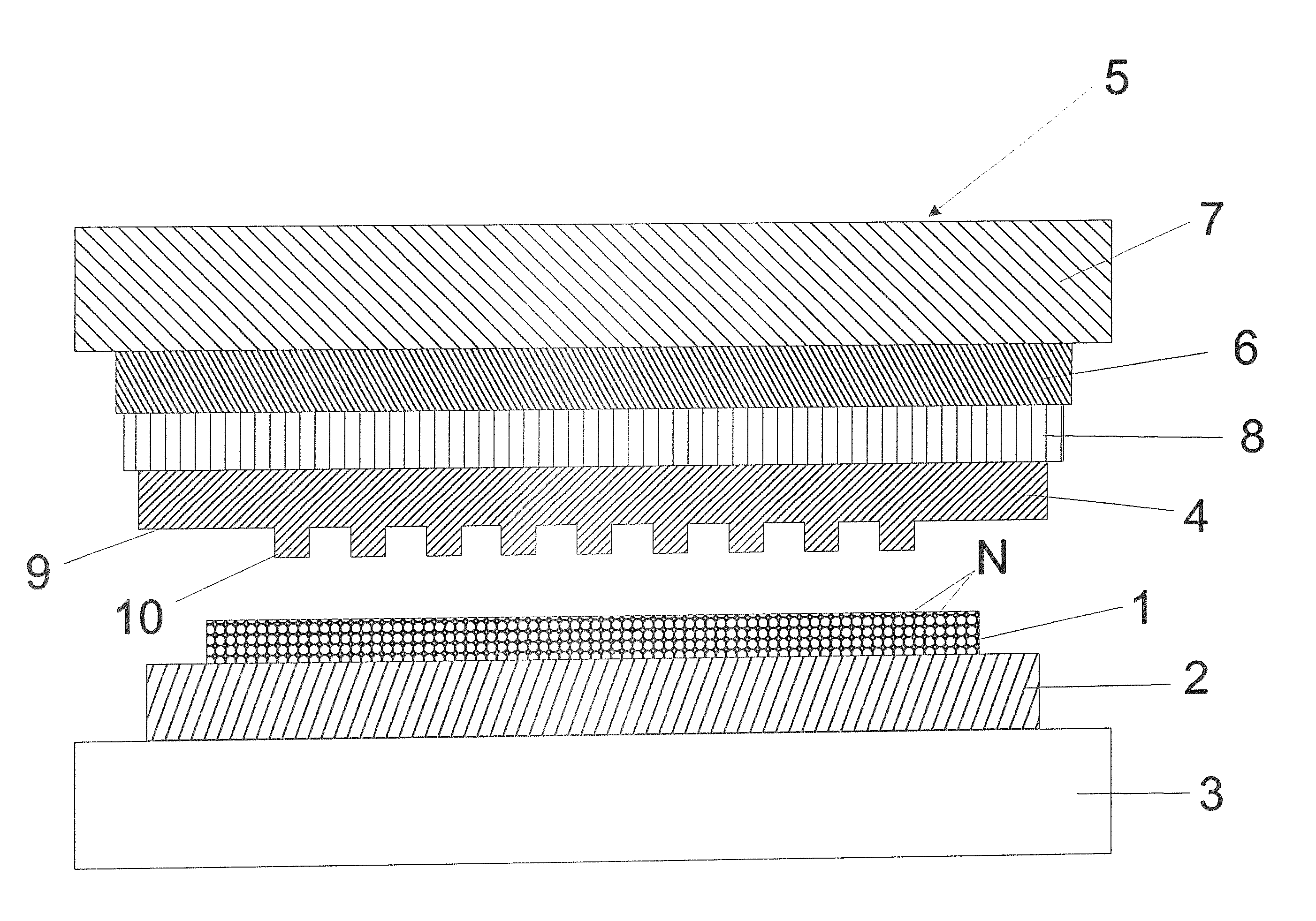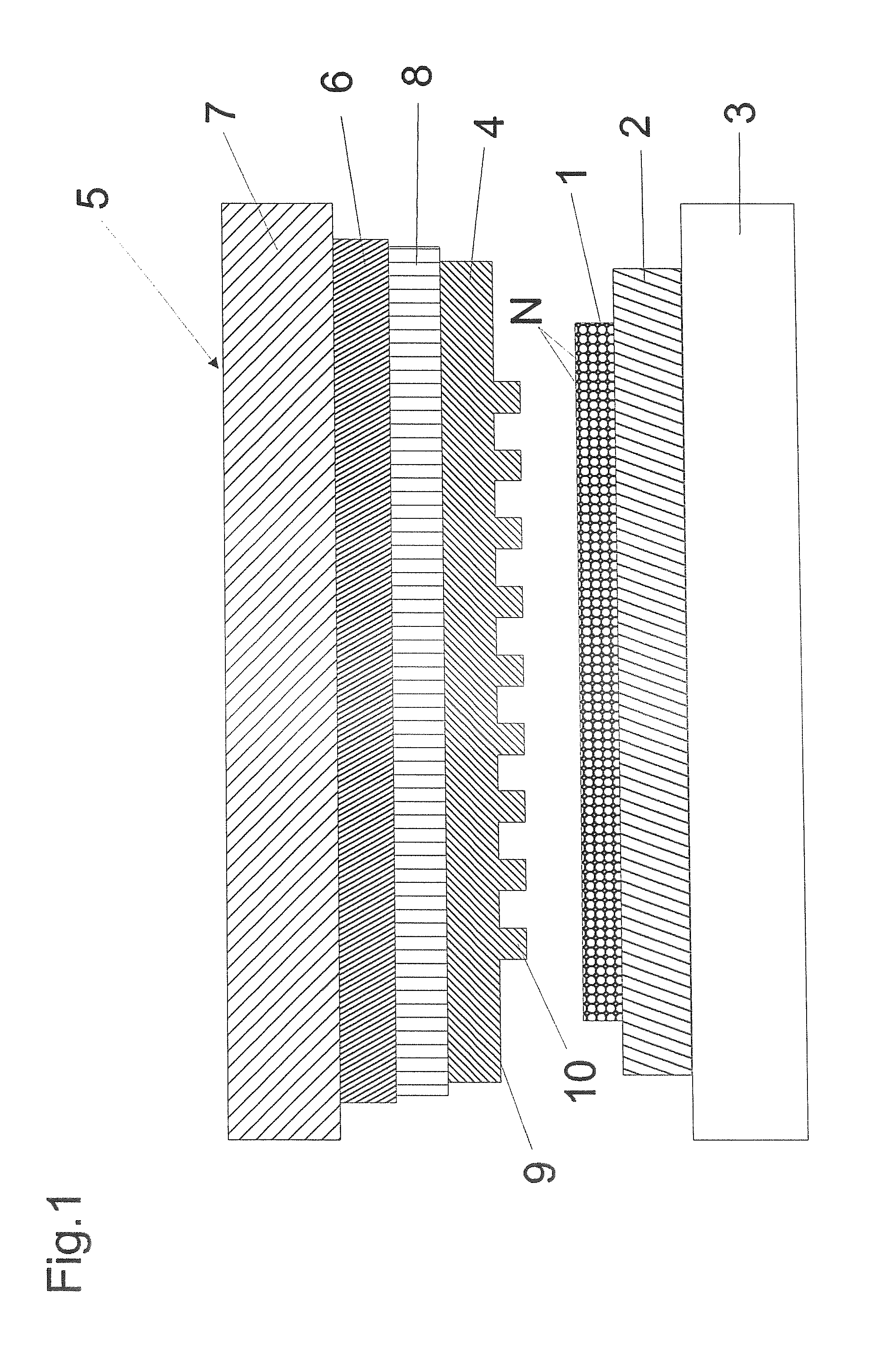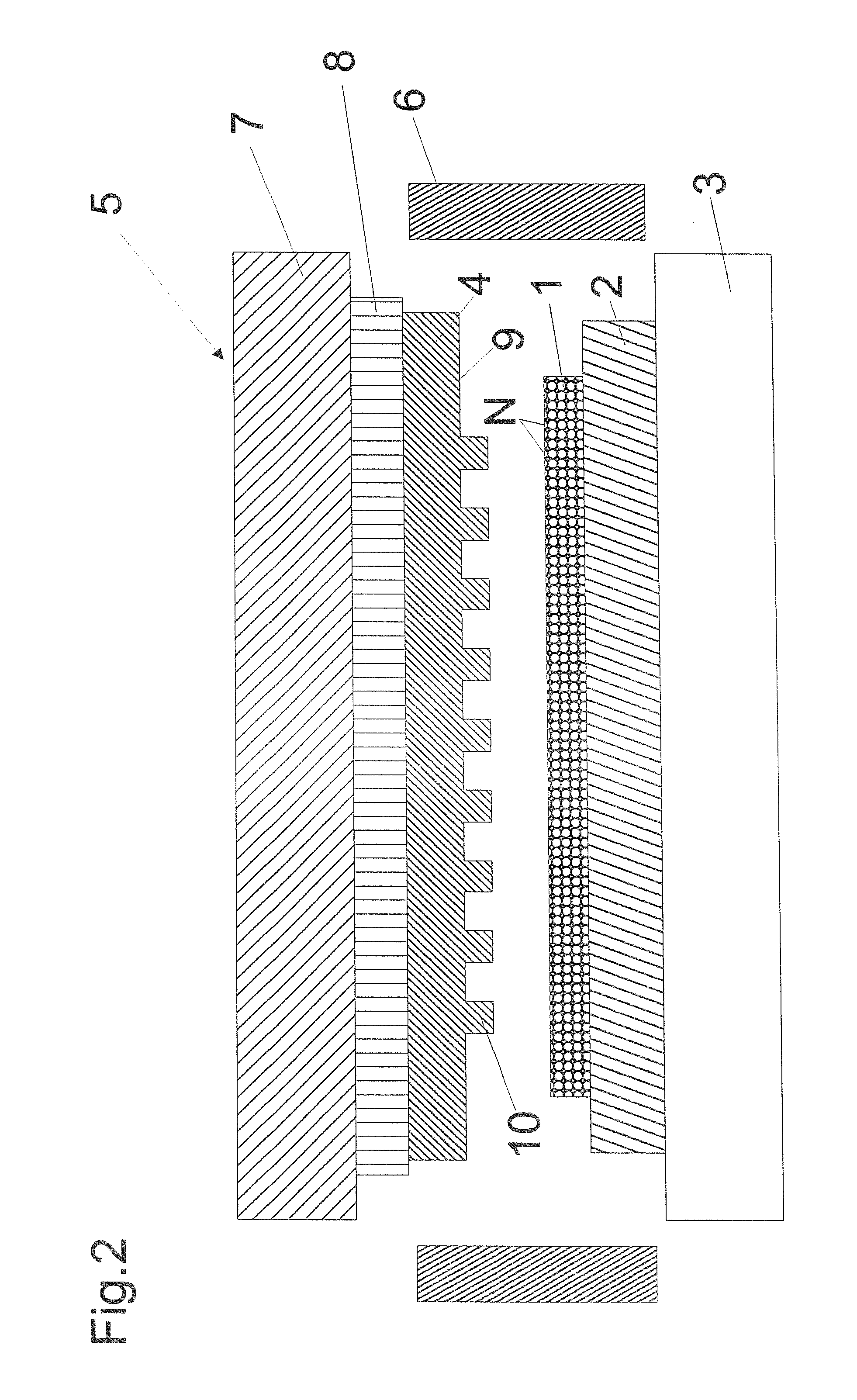Device and method for hot embossing of a polymer layer
a polymer layer and polymer layer technology, applied in the field of hot embossing of polymer layers and hot embossing of magnetic nanoparticlecontaining polymer layers, can solve the problems of shortening the thermal cycle, external cooling of the substrate after the embossing process, and other disadvantages, so as to achieve optimized throughput and reduce energy consumption.
- Summary
- Abstract
- Description
- Claims
- Application Information
AI Technical Summary
Benefits of technology
Problems solved by technology
Method used
Image
Examples
Embodiment Construction
[0023]The same components and components with the same function are identified with the same reference numbers in the figures.
[0024]FIG. 1 shows a substrate 2 which is to be provided with a polymer layer 1 on a substrate holder 3. The substrate holder 3 can be a chuck and the substrate 2 is applied to the substrate holder 3 by a robot arm which is not shown and is unloaded again after application of the polymer layer 1.
[0025]The polymer layer 1 contains magnetic nanoparticles N which are distributed as uniformly as possible in the polymer layer 1.
[0026]The polymer layer 1 is applied or placed for example by spin lacquering, lamination or joining to the substrate during embossing or by inkjet methods.
[0027]Opposite the substrate holder 3 a pressure application means 5 is fixed on the device and the pressure application means 5 has a pressure cylinder 7 which can move an embossing die 4 which is attached to the pressure cylinder 7 in the direction of the substrate 2. The embossing die...
PUM
| Property | Measurement | Unit |
|---|---|---|
| particle size | aaaaa | aaaaa |
| particle size | aaaaa | aaaaa |
| particle size | aaaaa | aaaaa |
Abstract
Description
Claims
Application Information
 Login to View More
Login to View More - R&D
- Intellectual Property
- Life Sciences
- Materials
- Tech Scout
- Unparalleled Data Quality
- Higher Quality Content
- 60% Fewer Hallucinations
Browse by: Latest US Patents, China's latest patents, Technical Efficacy Thesaurus, Application Domain, Technology Topic, Popular Technical Reports.
© 2025 PatSnap. All rights reserved.Legal|Privacy policy|Modern Slavery Act Transparency Statement|Sitemap|About US| Contact US: help@patsnap.com



